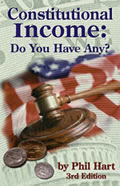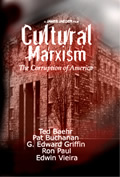A
CROSS OF GOLD
PART 4 of 5
By
Dr. Edwin Vieira, Jr., Ph.D., J.D.
May 10, 2011
NewsWithViews.com
So, all things considered, a true reform from any of these sources—although sufficient—is extremely unlikely. Instead, any supposed “monetary and banking reform” coming from these sources will almost surely be aimed at erecting a new supra-national currency and central bank. “The financial community’s” mouthpieces are already telling America precisely that.
Even assuming arguendo that the political problem of control of or influence over the General Government and the Federal Reserve System could be solved, intractable practical problems would remain—
• The plan for returning the Federal Reserve System to redemption of its notes in gold depends upon using the gold in the so-called “national gold stock” for the initial round of redemption That, however, leaves open the questions:
(ii) How much of that gold is encumbered in some way—by loans, leases, “currency swaps”, or other like devices—so that it cannot be used for redemption? And,
(iii) If sufficient gold is or could be made available for redemption tomorrow, then why is the Secretary of the Treasury not even now fulfilling his statutory obligation, under 31 U.S.C. § 5119(a), to “redeem gold certificates owned by the Federal reserve banks at times and in amounts the Secretary decides are necessary to maintain the equal purchasing power of each kind of United States currency”, at the statutory valuation of gold with relation to those gold certificates “of 42 and two-ninth dollars a fine troy ounce”, set in 31 U.S.C. § 5117(b)? And,
(iv) Notwithstanding the limitations on executive action and judicial relief set out in 31 U.S.C. § 5118(b and c), will individuals be entitled to enforce their new claims to redemption of Federal Reserve Notes in actual gold, by obtaining from the courts judgements, mandatory injunctions, and other like orders that require the Federal Reserve Banks and the Treasury of the United States to pay out gold in exchange for those notes at some fixed rate? Or will the supposed “right” of redemption be (as it always has been) a toothless paper tiger?
Obviously, these questions must be completely and unequivocally answered before anyone can begin to plan intelligently for, or really even to advocate, a return to redemption of Federal Reserve Notes in gold—or before any holder of those notes takes seriously a reformed Federal Reserve System’s assertion that he will enjoy a true right, in both law and fact, to redemption.
But will these questions be answered? For example, precisely how can the Department of the Treasury and the Federal Reserve System be compelled to disgorge the necessary information? What will it require to compel the Secretary of the Treasury to fulfill his present statutory obligations in the premises, let alone any new ones that may be required? And how can a premanent right of redemption be secured, unless it is somehow explicitly recognized and enforced as constitutional in nature?
• In any event, assuming arguendo that sufficient unencumbered gold exists in the “national gold stock” to start the process of redemption, and that the Secretary of the Treasury and other public officials can be compelled to fulfill their duties, the further question nonetheless remains: “At what rate of exchange should a Federal Reserve Note “dollar”-bill be redeemed with gold?”
Fortunately, 12 U.S.C. § 411 does not fix the rate of exchange at which Federal Reserve Notes “shall be redeemed in lawful money on demand on the Treasury Department * * * or at any Federal Reserve bank”. And § 30 of the Federal Reserve Act of 1913 licenses Congress to establish essentially any rate of exchange. Which is why the original repudiation of redemption of Federal Reserve Notes in gold domestically, and its modification internationally, in 1933 and 1934 was probably constitutional (to the extent the Federal Reserve Act itself is constitutional)—namely, because Congress had explicitly reserved in 1913 the right to make any changes it wanted in the Federal Reserve Act thereafter. So, when the rate of exchange was reduced from $20.67 per ounce to zero domestically, and from $20.67 per ounce to $35.00, and now to $42.22 per ounce as far as the Treasury’s gold certificates are concerned, Congress was merely exercising a right it had retained from the very beginning.
Yet, even given that any rate of exchange is allowable, how would a particular, presumably economically correct, new rate of exchange once set be maintained?
In light of the serial illegalities and duplicities of the past that brought America to this sorry pass, what new “checks and balances” would be necessary and sufficient to convince a doubting nation and world that the same swindle would not be allowed to be perpetrated again? The Federal Reserve Act of 1913 required redemption of Federal Reserve Notes in gold, and set reserve requirements of 40% for Federal Reserve Notes in actual circulation and 35% for the deposits held in Federal Reserve regional banks—yet these limitations were set aside only twenty (20) years later following the banking collapse of 1932. Franklin D. Roosevelt then set an exchange rate of $35.00 per ounce of gold for Federal Reserve Notes—yet, in terms of actual payments, this rate become meaningless after August of 1971, only thirty-seven (37) years after Roosevelt had conjured up the $35.00 per ounce figure. And the Secretary of the Treasury is even now required by statute to maintain the equal purchasing power of all form of United States currency according to the benchmark of $42-2/9 per ounce of gold—yet no such equivalence in purchasing power exists between Federal Reserve Notes and gold. So, critics are entitled to ask—
Are effective economic “checks and balances” possible under present conditions? Assuming good faith and competence in the managers of the plan, can it be made to work at all, even to get back to the situation pre-1971, let alone pre-1933, given the present terrible burden of public and private debt throughout America, the gutting of this nation’s real productive capacity, and her over-extension around the world in military imperialism and adventurism? Then, too,
Are effective political “checks and balances” possible under present conditions? What if the managers who happen to be chosen to oversee the Federal Reserve System and the Treasury in years to come prove incompetent or act in bad faith, or both? What if they simply continue to do the bidding of the racketeering enterprises and other criminal conspiracies that pass for “political parties” in Washington, D.C., and “financial institutions” in New York City?
The plan for returning the Federal Reserve System to redemption of its notes in gold does not in and of itself limit such rogue public officials, bankers, and financial plungers from manipulating currency and credit as the means to grab power and wealth, any more than did the old “gold standard” from 1913 to 1933 (or to 1971). And the precedents do not augur well. For nothing that has ever been done since 1913 with an eye towards controlling the Federal Reserve System in the interests of common Americans has ever worked, or perhaps was ever capable of working—or America would not find herself where she is today, being importuned to cede ever more and ever-more-abusive powers to the System’s bosses, with no adequate provision for either reviewability or accountability.
Obviously, implementing a so-called “price rule” is not even a simplistic answer. Such was the basis of the original Federal Reserve Act—the “price rule” being $20.67 per ounce of gold—and everyone knows how well that worked.
Without an absolutely enforceable constitutional guarantee—and by that is meant a guarantee enforceable directly by the people themselves, because they either hold their gold in their own hands or themselves physically control the depositories in which their gold is secured—rogue public officials and their clients in the banking cartel and “the financial community” can be expected to ferret out one means or another to change to their special advantage the rate of redemption(as it was serially altered after 1933) or even to eliminate it entirely (as it was in 1933 domestically and 1971 internationally).
• Even if all of the foregoing problems could be solved, what would be the point?
The plan for returning the Federal Reserve System to redemption of its notes in gold would not provide a truly sound currency, any more than the original Federal Reserve System ever did. It would merely give America the currency of pre-1933, or (worse) post-1933 and pre-1971, both of which have been experimentally proven to be unsound.
• The plan for returning the Federal Reserve System to redemption of its notes in gold would perpetuate the fallacy of “redeemable currency”—namely, that the Federal Reserve Note is the “dollar”, and some amount of gold is its “backing”. But—
A “George Washington” Federal Reserve Note is not a “dollar”. It is a mere promise to pay a “dollar”, which has been utterly dishonored by both the banks and the Treasury since 1933 (as to gold domestically) and 1971 (as to gold internationally), even unto this very day.[17]
And sound, honest, and constitutional “Money” has NO “backing” consisting of or based on something else. It needs no “backing”, because it has substance in and of itself. It is ACTUAL GOLD, not a mere promise to deliver gold. Sound, honest, and constitutional “Money” cannot be repudiated, because it does not need to and cannot be “redeemed”. It is the ABSENCE of “redeemability”—the LACK OF NECESSITY OR DESIRABILITY for “redeemability”—that constitutes the essence and provides the strength of sound, honest, and constitutional “Money”.
• As a further demerit, the plan for returning the Federal Reserve System to redemption of its notes in gold would retain the institutions, and attempt to validate the false ideas, that were the instrumental causes of all of America’s problems. Under this plan, the merry-go-round of financial looting would not be permanently shut down, only temporarily slowed down—and not for a fundamental redesign, but only for repairs and repainting. Then it would be returned to operation under the same old management (at least in type), running in the same old direction, for the same old purposes. And inevitably with the same old results—because a merry-go-round cannot be straightened out.
• Most distressing to one’s sense of justice, the plan for returning the Federal Reserve System to redemption of its notes in gold also would reward the very class of people who caused or allowed nearly a century of monetary and banking problems to beset this country. By bailing them out of the mess they have caused—without punishment, without even censure, but with protection and payoffs, present and future—it would perpetuate their system, their power, their wealth, their status, their prestige. It would maintain them in positions from which—if they operated in the future as they have in the past, as history and a knowledge of human nature premonish America that they would—they could despoil this country once again, just as they did with the original Federal Reserve System.
• The plan for returning the Federal Reserve System to redemption of its notes in gold would require not only perhaps more perspicacity than Americans probably could muster, but above all more patience. It would take a long time to implement. Therefore, it would demand the people’s acceptance—really, the imposition—of political and economic discipline. Yet where would such patience and discipline be found, when this country is riven by contending factions for which après moi le déluge are the watchwords?
In particular, who would impose that discipline against all of the economically and politically powerful factions that want “funny money” and the Ponzi pyramids it facilitates? And how could such discipline be maintained, in the face of the monumental, arguably unpayable debt of the General Government? Would it not require the intervention of the Armed Forces—“government by junta” in the sorry style of Argentina and other Latin-American republics? One must presume so. For the Department of Homeland Security and the Pentagon are even now preparing, in anticipation of massive civil unrest when the monetary and banking systems finally melt down, to involve the Armed Forces in domestic peacekeeping.[18]
• As if all these shortcomings were not enough, the plan for returning the Federal Reserve System to redemption of its notes in gold would put all of this country’s monetary eggs in one political-cum-economic basket. If the plan did not work, all would likely be lost. This would be equivalent to playing Russian roulette with a semi-automatic pistol.
In sum, the return-to-redemption plan is an act of self-deception, if not desperation, which does not take advantage even of hindsight. For it proposes to reverse American monetary history on the basis of the very principles and practices which that history has already proven to be unworkable.
[3] An alternative gold currency.
Which brings this survey to the third plan for monetary reform—the adoption on a State-by-State basis of a new, sound, honest, and constitutional alternative currency consisting of actual gold as an—and ultimately the only—currency officially recognized by the State.
In the plan I have proposed, and which has been submitted—albeit, so far, unsuccessfully—to several State legislatures:
• The State adopts as its alternative currency so-called “electronic gold currency”.[19]
• Actual gold bullion is held for depositors in personal bailment accounts by an electronic gold currency provider (which could be a private organization or the State’s own Treasury). So no “fractional reserves” are involved.
• Title to the gold on deposit can be transferred among depositors electronically or by more traditional means, such as checks.
• The process begins when the State collects some of her taxes in gold, and offers to pay her creditors with gold, on a first-come, first-served basis, from the gold tax fund.
• As more and more creditors request such payment, depleting the fund of gold secured by those taxes initially collected in gold, the State expands the taxes required to be paid in gold, until the State’s finances are largely, if not completely, on the gold standard.
In the initial plan I drafted,
• Those who were required to deal with the State in electronic gold currency in order to pay taxes, and those who chose to be paid in gold by the States were the only parties, in addition to the State herself, who were required to maintain electronic-gold-currency accounts.
| Subscribe to the NewsWithViews Daily News Alerts! |
• But, parties who were required to pay their taxes in gold were expected to find it useful to seek payment from their own debtors in gold, and the State’s creditors who sought payment in gold were expected to offer to pay gold to their creditors, too, so that the use of gold would percolate through the private economy in gradual, but inexorable competition with Federal Reserve Notes. For part five click below.
Click here for part -----> 1, 2, 3, 4, 5,
Footnotes:
17.
See 31 U.S.C. § 5118(b and c).
18.
See the present author’s commentary on this issue, “Going
to the Roots of the Problem”
19.
Of the type available
in the free market through, e.g.,


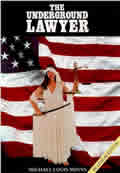

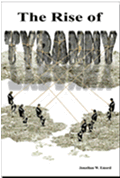

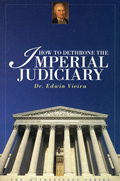
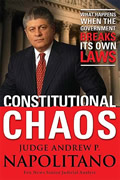





 Share
This Article
Share
This Article
